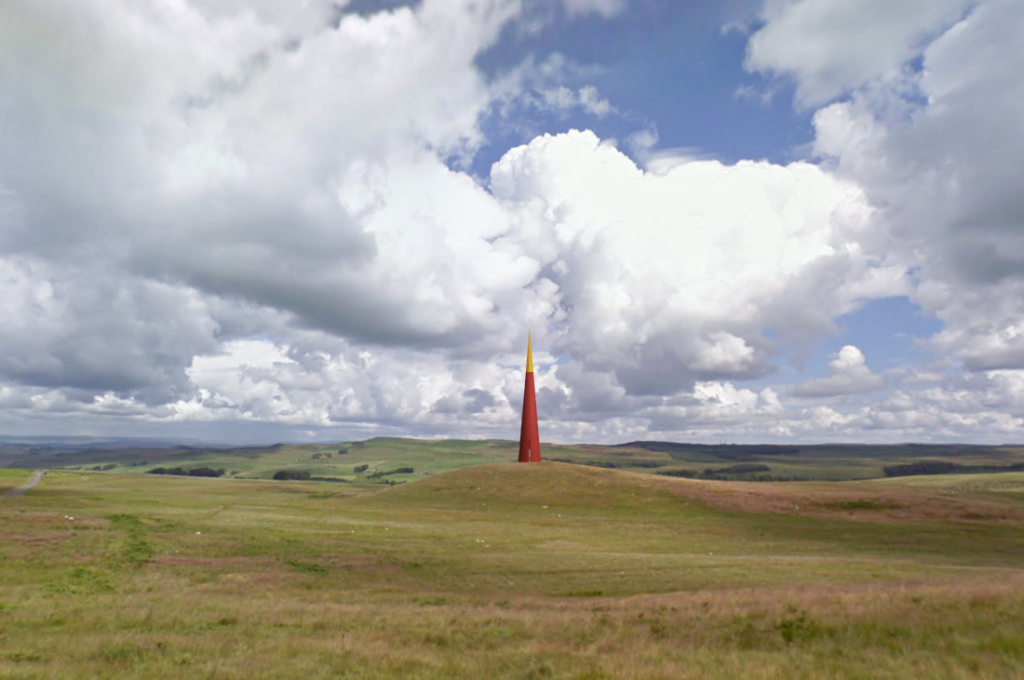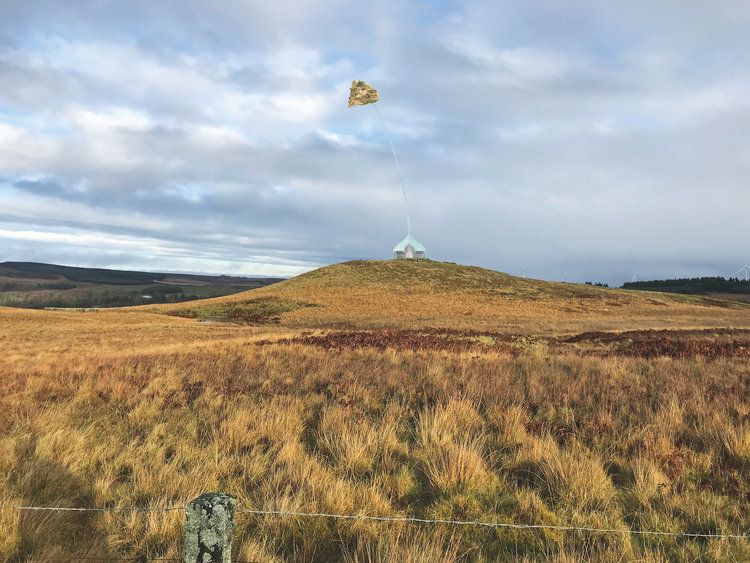British Aristocrat Commissions 180-Foot Monument Celebrating Elizabeth II’s Reign
The Third Viscount Devonport has chosen sculptor Simon Hitchens to bring the Elizabeth Landmark to life
/https://tf-cmsv2-smithsonianmag-media.s3.amazonaws.com/filer/56/84/56848526-69e0-453b-9b0d-83e9e3066971/simon_hitchens_.jpg)
As soon as 2020, travelers driving along the A68, a main roadway between England and Scotland, will be greeted by a towering column of steel jutting out of the Northumberland hillside at a roughly 30-degree angle. Measuring 180 feet tall and weighing in at 200 tons, the $2.6 million structure is expected to dominate the northern English landscape, reminding viewers—despite its abstract, industrial design—of Britain’s beloved monarch, Queen Elizabeth II.
Artnet News’ Javier Pes reports that the planned monument is the brainchild of Terence Kearley, Third Viscount Devonport. The retired architect and philanthropist has dreamed of building a monument to the queen for some 25 years, and in early 2018, he commissioned three artists to submit designs for the project. Now, Lord Davenport has officially chosen British sculptor Simon Hitchens to bring his vision to life.
Aside from setting a minimum height requirement, the viscount largely left the artists to their own devices. All three shunned traditional figurative representations of the queen in favor of abstract contemporary designs.
Alnwick-based sculptor Colin Rose proposed a terracotta spire capped with a stainless steel, gold-tinted finish. In his project outline, Rose noted that the design mirrored a point on a compass, subtly speaking to the globalized nature of the Commonwealth, a voluntary association of 53 independent sovereign states historically linked under the British Empire.

Queen Elizabeth’s role in establishing the Commonwealth is a key inspiration for Lord Devonport’s ambitious project: “[The queen] personally moved the Commonwealth into a free, equal and voluntary group of member states united by language, history, and culture,” the viscount said in a statement. “[She unified the Commonwealth] under shared values of democracy, free speech and human rights.”
According to Artnet News’ Pes, Newcastle artist Peter J. Evans submitted a kinetic sculpture grounded by a shelter designed to echo Bronze Age cairns, or stacks of stones piled up for purposes as varied as signposting and marking gravesites.
“I envisage a structure that moves with the ever-changing conditions of the Northumberland landscape whilst also providing shelter from them,” Evans wrote in his proposal. “... As the surrounding landscape and the structure itself alter through its year-long rotation, their attention is drawn towards an appreciation of the connections between themselves, the immediate environment, and all things.”

But it was West Country sculptor Simon Hitchens whose design most impressed Lord Devonport and members of the public recruited to help with the selection. His 180-foot steel column, which will officially be known as the Elizabeth Landmark, aims to merge with the “rugged and undulating landscape in which it sits,” rising out of the ground like some sort of futuristic lever.
Hitchens tells Pes that the structure’s industrial bent will reflect the economic history of Northern England, which once hosted bustling coal and iron ore mining industries, and thereby honor the countryside over which the queen presides.
The monument will be angled to align with the sun’s zenith at the height of the summer equinox, and a 279-foot-long trench carved into the land lies below the structure like a shadow. Elliptical paths encircling the area will provide shelter for visitors venturing atop the windswept hilltops of the viscount’s Northumberland estate.
Currently, Antony Gormley’s Angel of the North is one of Great Britain’s most recognizable public sculpture. The steel figure, which was erected 20 years ago in the northeastern town of Gateshead, stands around 65 feet tall and boasts a wingspan of 177 feet—roughly three times smaller than Lord Devonport’s landmark, which the viscount says must reach at least 180 feet, or the same height as the cliff nearest to the proposed site.
In addition to executing Hitchens’ design, Lord Devonport plans on creating an accompanying visitor space that allows tourists to wander the grounds surrounding the landmark and learn about the Commonwealth's history through a series of commissioned poems. Before any of these projects can begin, however, the viscount, Hitchens and curator Matthew Jarrett must work with engineers to finetune the monument’s design, wrangle final approval from local authorities and raise the couple million dollars needed for construction.
If all goes well, Lord Devonport has one final goal in mind—obtain the queen’s personal seal of approval and convince her to inaugurate the monument in person.
/https://tf-cmsv2-smithsonianmag-media.s3.amazonaws.com/accounts/headshot/mellon.png)
/https://tf-cmsv2-smithsonianmag-media.s3.amazonaws.com/accounts/headshot/mellon.png)